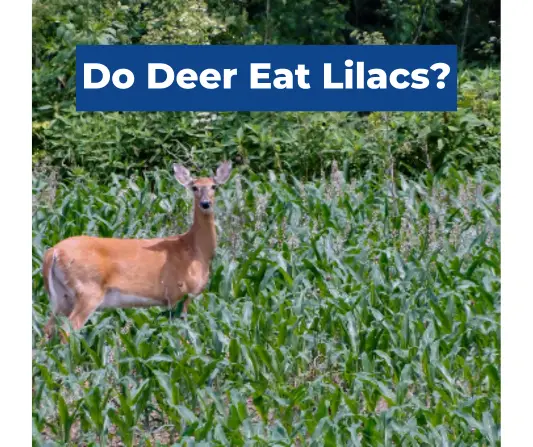Lilacs are a popular choice for many gardeners and homeowners due to their fragrant blooms and attractive appearance. But if you live in an area with a large deer population, you may be wondering: do deer eat lilacs? Deer tend to avoid lilac bushes, but have been known to eat a wide variety of plants, including many that are considered deer-resistant like lilacs.
Deer damage to gardens and shrubs can be a frustrating and costly problem for many homeowners. While there are many deer-resistant plants available, it can be difficult to know which ones will truly deter deer from eating them.
Lilacs are often considered to be a deer-resistant plant, but as with any plant, there is no guarantee that deer will not lilacs if they are hungry enough. Understanding the factors that affect deer behavior and their feeding habits can help you make informed decisions about which plants to include in your garden.
We’ll cover the most deer-resistant lilac varieties to plant and give you some tips to keep deer away from them in this guide.
Why Don’t Deer Like Eating Lilacs?
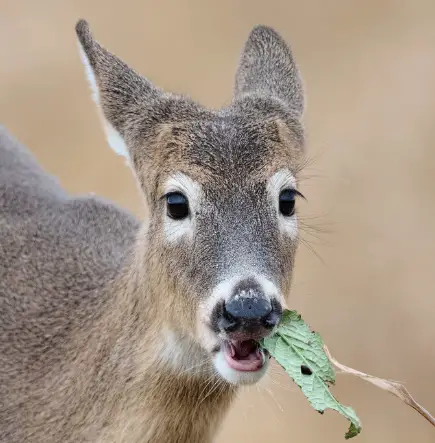
Lilacs are a popular ornamental shrub known for their fragrant flowers and attractive foliage. While deer are known to be voracious eaters, they tend to avoid consuming lilacs. Here are some reasons why:
Deer Resistant
Lilacs are considered deer-resistant plants. This means that they have a natural defense mechanism that makes them less attractive to deer. The pungent aroma of lilacs is one of the reasons why deer tend to avoid them. Lilacs contain terpenes, which are organic compounds that give them their distinctive scent. These compounds are not harmful to deer, but they make the plant less palatable.
Bark
Another reason why deer don’t like eating lilacs is because of the texture of the bark. Lilacs have a rough, woody bark that is difficult for deer to digest. When deer eat bark, it can cause them to choke or suffer from digestive problems. As a result, deer tend to avoid plants with rough bark, including lilacs.
Are Lilacs Considered Deer-Resistant Plants?
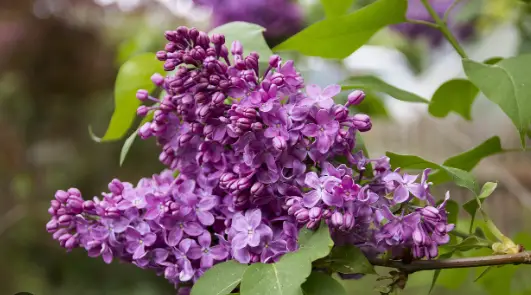
Lilacs are known for their beautiful and fragrant flowers, making them a popular choice for gardeners. However, many gardeners are concerned about deer damage to their plants. So, are lilacs considered deer-resistant plants?
According to experts, most varieties of lilacs are deer-resistant, though some species deter deer better than others. The common lilac, Syringa vulgaris, grows up to 20 feet tall and is rarely disturbed by deer. However, if there is nothing else for them to consume, deer may nibble on lilacs.
It is important to remember that no plant is truly deer-resistant. If deer are hungry enough and their food sources are scarce, they may eat plants that they would normally avoid. Lilacs are not a favorite food of deer, but they may still be eaten if there is nothing else available.
Despite this, lilacs are still considered a good choice for gardeners looking for deer-resistant plants. They are seldom severely damaged by deer and can add beauty and fragrance to any garden.
In addition to lilacs, there are other plants that are known for their deer-resistant properties. These include:
- Daffodils
- Lavender
- Rosemary
- Sage
- Yarrow
Using these plants in your garden can help deter deer and minimize damage to your plants.
Which Lilac Bushes Are Deer Resistant?
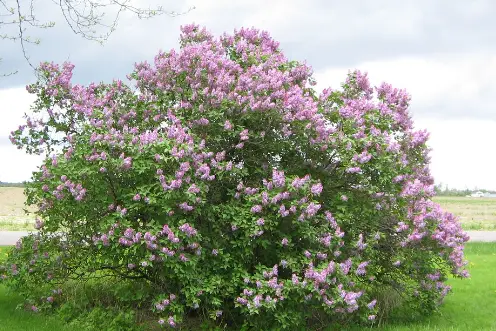
Lilacs are a popular choice for gardeners due to their beautiful, fragrant blooms and easy-to-care-for nature. There are several types of lilac bushes that are more deer-resistant than others.
Common Lilac
The common lilac (Syringa vulgaris) is a popular choice for gardeners due to its showy, fragrant blooms and hardy nature. This lilac bush can grow up to 20 feet tall and wide, making it a great choice for hedges or as a focal point in the landscape. Fortunately, the common lilac is also rarely disturbed by deer, making it an excellent choice for those looking for a deer-resistant shrub.
Miss Kim Lilac
The Miss Kim lilac (Syringa patula ‘Miss Kim’) is a smaller, more compact lilac bush that is also known to be deer-resistant. This lilac bush typically grows to be around 6 feet tall and wide, making it a great choice for smaller gardens or as a border plant. The Miss Kim lilac is also known for its beautiful, fragrant blooms that attract pollinators to the garden.
Lincoln Lilac
The Lincoln lilac (Syringa x hyacinthiflora ‘Lincoln’) is a hybrid lilac that is known for its beautiful, fragrant blooms and hardy nature. This lilac bush typically grows to be around 10 feet tall and wide, making it a great choice for hedges or as a focal point in the landscape. The Lincoln lilac is also rarely damaged by deer, making it an excellent choice for those looking for a deer-resistant shrub.
Persian Lilac
The Persian lilac (Syringa x persica) is another type of lilac that is known to be deer-resistant. This lilac bush typically grows to be around 8 feet tall and wide, making it a great choice for hedges or as a focal point in the landscape. While the Persian lilac is occasionally damaged by deer, it is still a great choice for those looking for a deer-resistant shrub.
Japanese Tree Lilac
Another type of lilac that is known to be deer-resistant is the Japanese tree lilac (Syringa reticulata). This tree lilac can grow up to 30 feet tall and wide, making it a great choice for those looking for a larger shrub or small tree. The Japanese tree lilac is also known for its beautiful, fragrant blooms that attract pollinators to the garden.
How To Protect Your Lilacs from Deer
Lilacs are a beautiful addition to any garden, but they can be a target for deer who love to munch on the leaves and flowers. Here are some effective ways to protect your lilacs from deer:
1. Plant Deer-Resistant Plants Around Your Lilacs
Planting deer-resistant plants around your lilacs can help keep deer away. Some examples of deer-resistant plants include:
- Buxus
- Juniperus
- Sage
- Marigold
- Vinca
These plants have strong scents or tastes that deer tend to avoid.
2. Use Repellents
Repellents can be an effective way to keep deer away from your lilacs. You can use sprays or granules that contain natural ingredients like garlic, pepper, and egg solids. Alternatively, you can use commercial repellents that contain predator urine or blood meal. Be sure to follow the instructions carefully and reapply as needed.
3. Install Fencing
Fencing is a more permanent solution for keeping deer away from your lilacs. A tall fence (at least 8 feet) can be effective, but it can also be expensive and may not be aesthetically pleasing. A cheaper and more attractive option is to install a double fence. This involves installing a low fence (about 3 feet) around the perimeter of your garden and then planting a row of deer-resistant plants inside the low fence. Then, install a taller fence (about 6 feet) around the perimeter of the deer-resistant plants.
4. Use Netting
Netting can be a good option if you only have a few lilacs to protect. Simply wrap the netting around the lilac bush, making sure it is secure at the bottom. Be sure to remove the netting once the lilac has finished blooming to avoid damaging the flowers.
By following these tips, you can protect your lilacs from deer and enjoy their beauty all season long.
Can I Still Attract Deer to My Yard While Growing Lilacs?
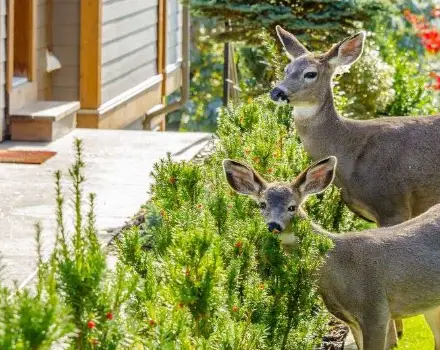
If you’re a fan of lilacs and want to grow them in your yard, you may be wondering if it’s still possible to attract deer to your yard. The good news is, yes, you can still attract deer to your yard while growing lilacs. Here are some tips to help you do it.
Butterflies
Butterflies are a great way to attract deer to your yard. They love to feed on the nectar of flowers, and they are attracted to bright colors. Some of the best flowers to plant to attract butterflies include coreopsis, coneflower, and rose of sharon.
Other Pollinators
Other pollinators, such as bees and hummingbirds, are also great for attracting deer to your yard. They are attracted to flowers that are rich in nectar and pollen. Some of the best flowers to plant to attract these pollinators include viburnum dentatum, buddleia davidii, and perovskia atriplicifolia.
When planting flowers to attract deer, it’s important to choose ones that are deer-resistant. Some of the best deer-resistant flowers include blue mist shrub, daphne, bleeding heart, corydalis, and lungwort.
In addition to planting flowers, you can also leave out food for the deer. Consider leaving out bananas, grapes, and pineapple chunks. However, make sure to place the food far away from your lilac crop.
Overall, it is possible to attract deer to your yard while growing lilacs. By planting the right flowers and leaving out food, you can create a welcoming environment for these beautiful animals.

